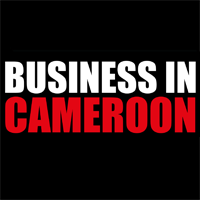
Optimising the DSX: Imagine if a merger with BVMAC were the solution!

(Business in Cameroon) - The question came up as soon as the Douala Stock Exchange began operations. It’s still being talked about today and is more relevant than before.
A number of experts who follow the Central African market trends believe that the existence of both stock exchanges inhibits the creation of a fluid and efficient securities market in the sub-region. “It’s important to be honest with ourselves. This dual project in a community still in its early stages is one of the most unfortunate, shameful displays of our region on the international stage,” stated Babissakana, a financial engineer, in one of his analyses of the capital markets and suggested that even the political leaders are to be held responsible. “More and more, I’m hearing people talking about the need to merge the Douala and Libreville stock exchanges. I think it’s an interesting option. Personally, I’m in favour of it,” stated Pierre Moussa, Chairman of the CEMAC Commission. That was on August 14, 2013 during a meeting on the evaluation of the Regional Economic Programme (REP).
ADB’s solution: Douala will operate, Libreville will regulate
As far back as 2011, the African Development Bank had proposed a merger to put an end, once and for all, to the competition that had been going on between the two stock exchanges. According to the ADB, the regional stock exchange would be placed in Douala, Cameroon where there is more economic activity and the sub-region’s regulatory body (COSUMAF) should be kept in the Gabonese capital. This model would mean the termination of the Cameroonian regulatory authority. The proposal was to be endorsed at the Heads of State summit in January 2012, but when the agenda item was tabled, they simply acknowledged the principle behind the idea and then left it for further discussion. Yet, there are several reasons against the ADB model. The first reason concerns transaction costs in Douala. “We have nothing against the idea of returning the future Central African stock exchange to Douala, but the ADB’s analysis doesn’t seem to guarantee one thing: transaction cost reduction. The DSX generates transaction costs that will remain, whether it is a national or sub-regional entity. What people don’t know is that if many institutions, apart from the SFI, prefer to take their bonds to BVMAC, it’s because it’s cheaper. For example, the Cameroon loan was officially set at a 5.6% interest rate, but in reality, it’s the gross rate to which you have to add the commissions of all the middlemen and that brings it up to 10 or even 11%. No one can borrow at a rate like that. Yet, in Libreville, the cost is less,” explains an anonymous source from BGFI Bourse.
A major challenge
Within CEMAC, if the merger topic comes up, responses vary from one group to the next. “To ensure the best integration possible, the DSX should be absorbed by the BVMAC. It will be important to specify and indicate the merger mechanisms and the various local and national institutions and organisations that would be modified, restructured or dissolved. This dual stock exchange system is a source of political tension, inefficiency and economic, financial, and stock market fragmentation,” explained Georges Taty, Attorney General at the CEMAC Court of Justice at the swearing-in ceremony on February 2013 for the new COSUMAF heads.
In 2002, when he formulated his merger proposal, Mr. Babissakana had opted for a dual financial framework (Libreville and Douala), one working in bonds; the other in shares, with both being regulated by the same body. This model has the advantage of allowing each to maintain some autonomy. Debates aside, the urgent need for a merger is becoming more and more apparent and should enable the CEMAC zone capital market to get off the ground. “An integrated regional response supported by consistent effort on the part of political leaders with the aim to breathe new life into the Central African integration process. The process of bringing the two closer together would therefore be a part of this pro-integration effort,” noted the COSUMAF in 2011.


